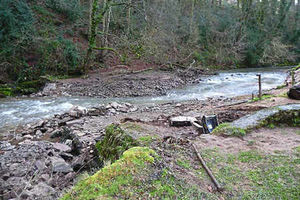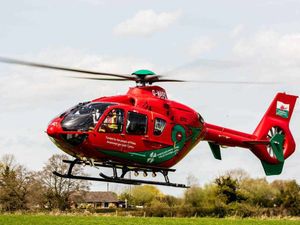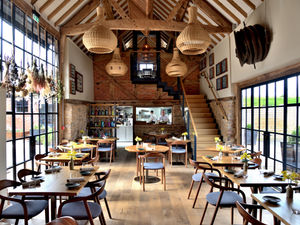Fish now enjoy run of the river as Shropshire weir disappears
Fish have the freedom of a Shropshire river for the first time in hundreds of years as an historic man-made weir has been removed.

The weir at Cleobury Mortimer's former Paper Mill, to the north of the town has been "decommissioned" and removed as part of the Severn Rivers Trust's Rea River Restoration project.
The move has been made to allow species such as brown trout and salmon to migrate along river's length — to connect fish habitats that have been cut off from each other and help keep stocks healthy.
A marked decline in fish species in the region's rivers in recent decades has sparked an ongoing drive to remove or improve man-made barriers to fish migration on rivers such as the Teme and the Severn.
Tony Bostock, chief executive at Severn Rivers Trust, said while some may be sorry to see the weir go, it was in a poor state and taking it away would "generate major biodiversity improvement".
He said a simple fish pass would not have been as effective.
Not everyone was happy to see the weir go. Resident Gill Guest said: "I was shocked to find on my Sunday walk that our local weir had been demolished. The weir, a historic remnant of Cleobury Mortimer's Paper Mill, was a popular destination for walkers, and a summer swimming spot for generations of Cleobury children.
"I'm sure there's a good reason, but I'm sad to see a historic feature destroyed."
However, Mr Bostock said: "This scheme has restored habitat connectivity in the lower River Rea catchment, after fragmentation that has lasted for centuries.
"The completion of this project has not only removed a significant barrier to multi-species fish passage, but it has also helped to restore natural river processes which will benefit overall biodiversity within the area.
"There is excellent river habitat in the upper reaches of the Rea, but the full potential of this habitat was not being realised, as it was effectively blocked by the weir."
He said the work, carried out with the Environment Agency under the Catchment Restoration Fund, would also reduced the risk of flooding.
"This work complements habitat restoration that has already been carried out by the Severn Rivers Trust upstream and in the future should see it becoming an excellent nursery stream for fish," he said.
The work is part of major drive in the region to boost migrating fish populations, which has seen fish passes created at Dinham weir in Ludlow in 2013, and one at Lingen Bridge in Brampton Bryan, near Leintwardine, last year.
At Mill Street weir, again in Ludlow, plans for a £75,000 fish pass were announced in January.
A time-lapse film of the work undertaken at the site at Cleobury Mortimer is being produced and will be uploaded to the body's website at severnriverstrust.com shortly.





